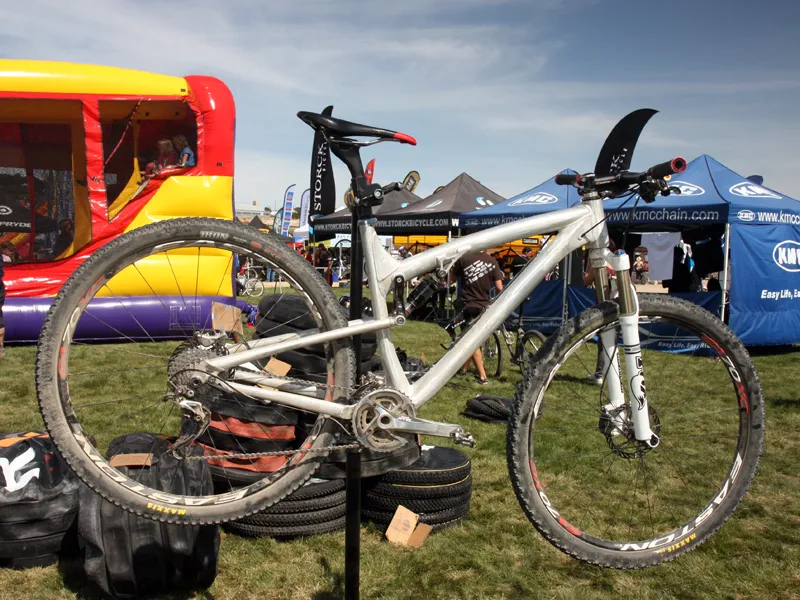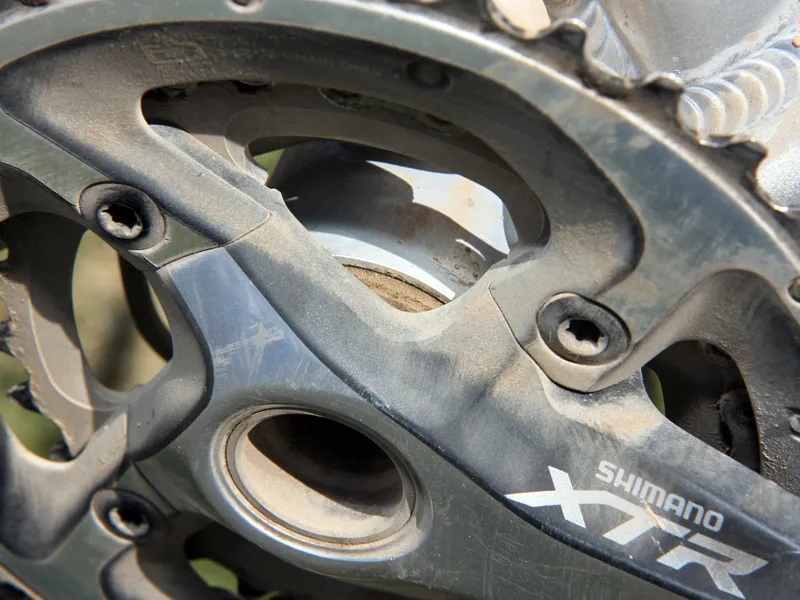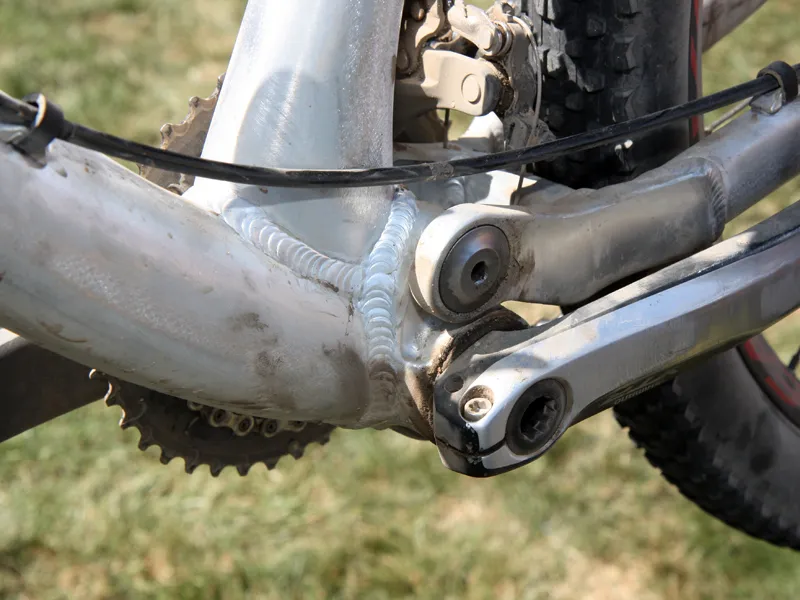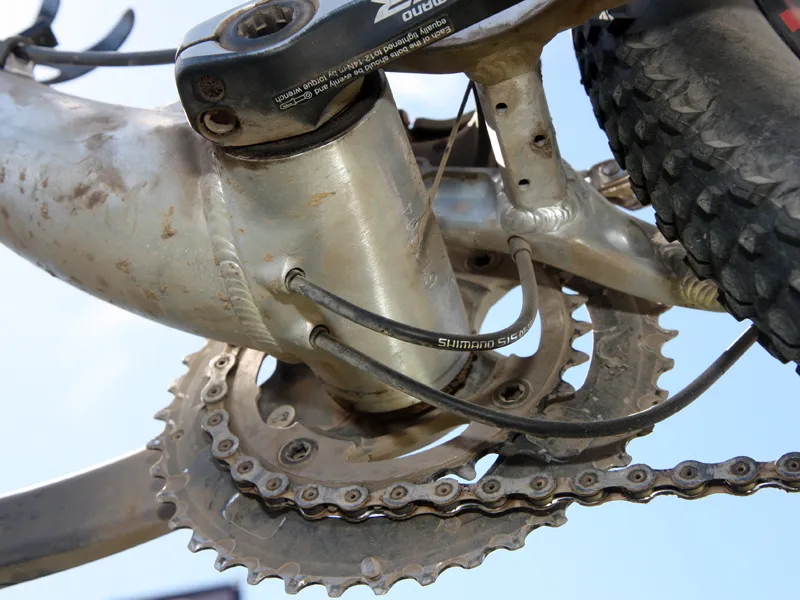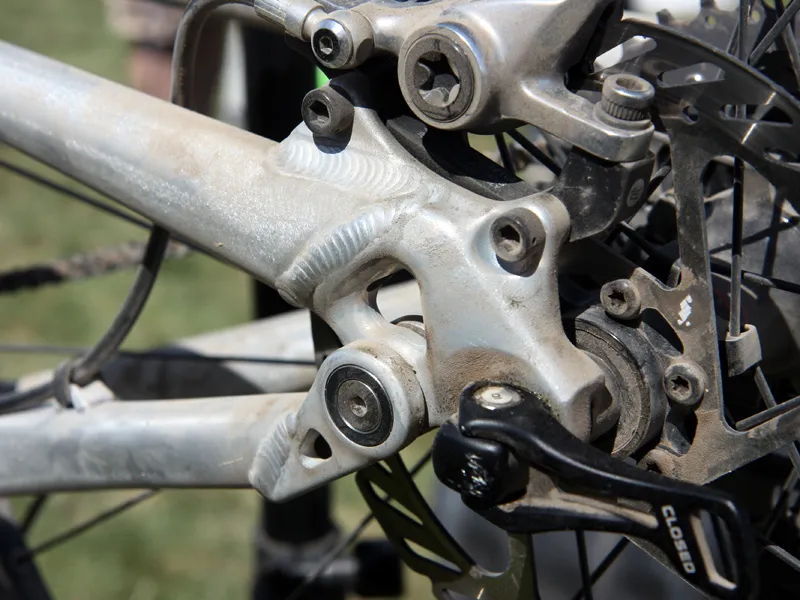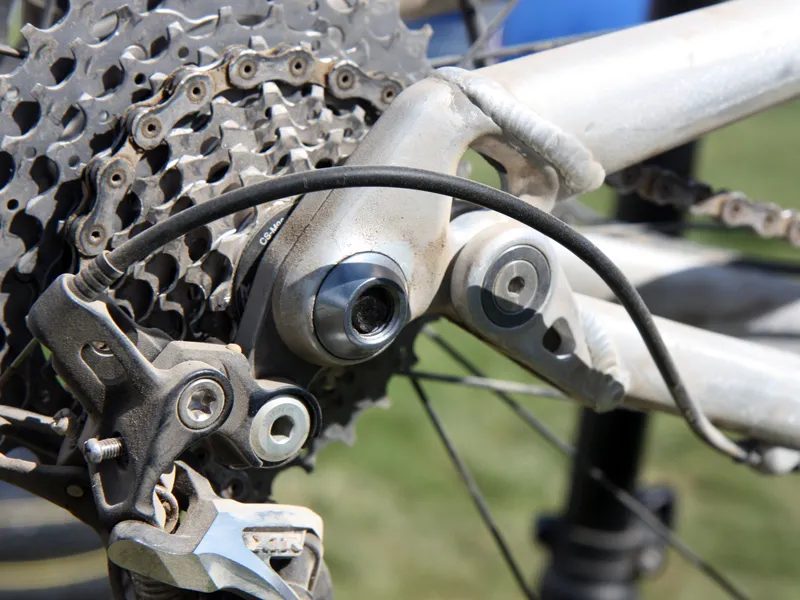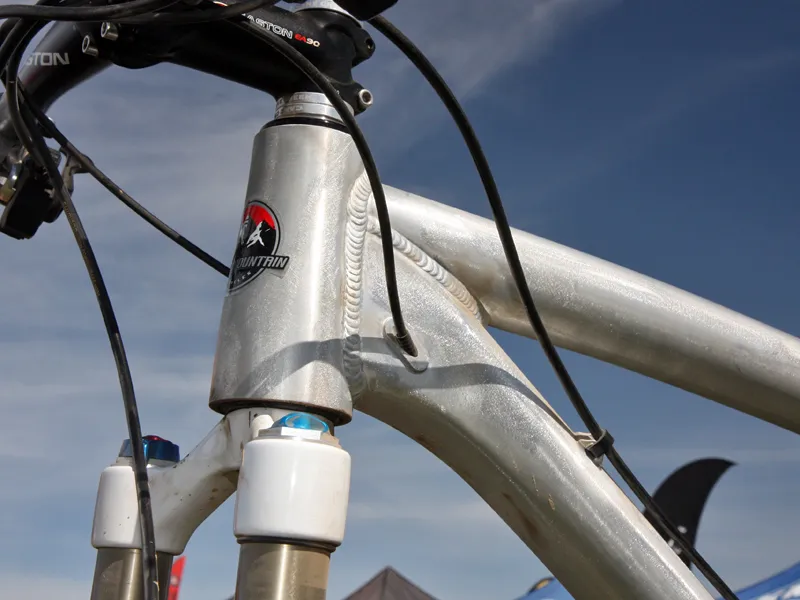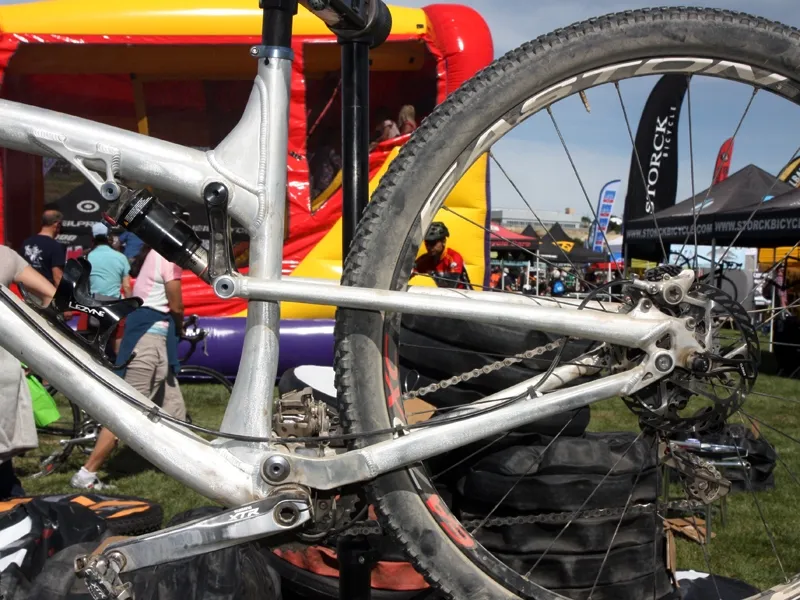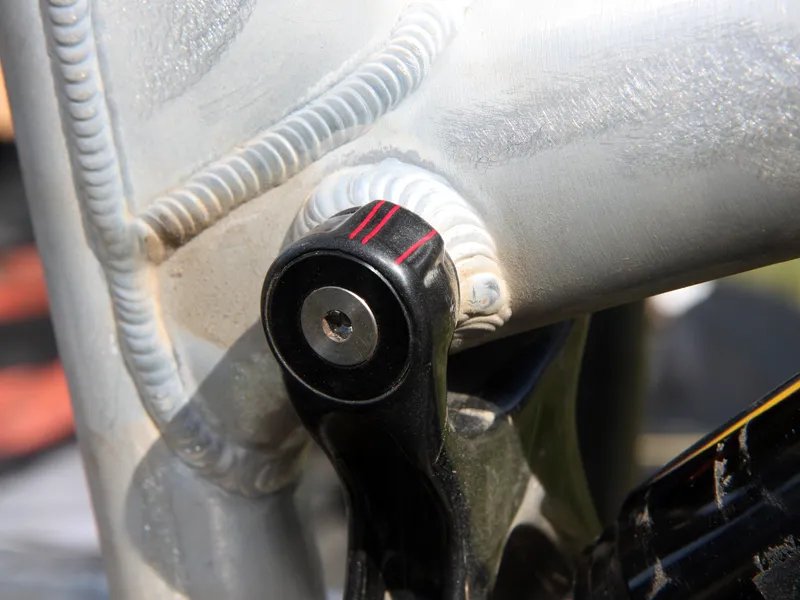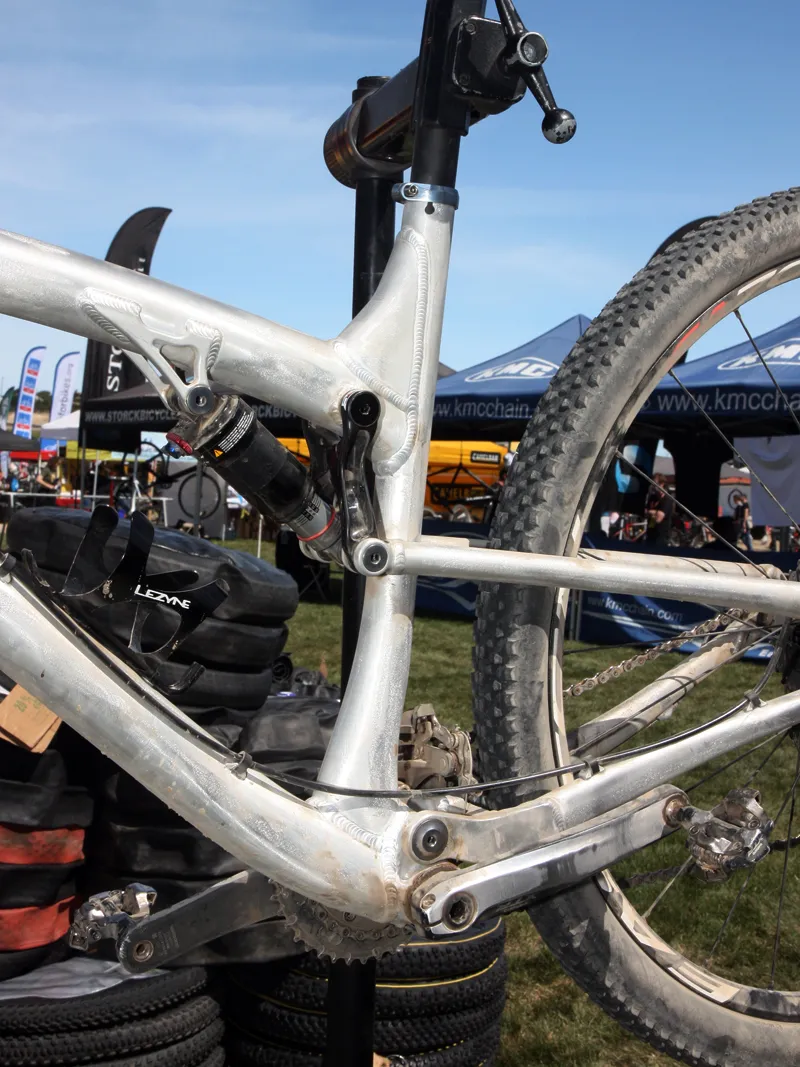Rocky Mountain's 29in-wheeled aluminum full-suspension cross-country bike was officially still in prototype form at this year's Sea Otter Classic but come this fall, it'll officially be offered as the 2012 Element 29.
As we're noticing increasingly often on new chassis, Rocky Mountain have placed a strong emphasis on frame stiffness for the Element 29. The broad, squared-off down tube takes up nearly the entire height of the tapered head tube up front and terminates down below at an extra-wide, Shimano-standard, press-fit bottom bracket shell. That wide shell lets Rocky Mountain push the main pivot bearings further apart, too.
A swingarm-mounted front derailleur tracks the chain throughout the travel range for better shift performance and also loosens design constraints for the heavily sculpted seat tube, which is flared down below for additional drivetrain rigidity and offset forward at the bottom bracket to help tuck in the rear wheel. The top tube is notably large to keep torsional flex at bay for more precise handling, while the forged rear dropouts are set up around a 142x12mm RockShox Maxle through-axle to more solidly tie the stays together.
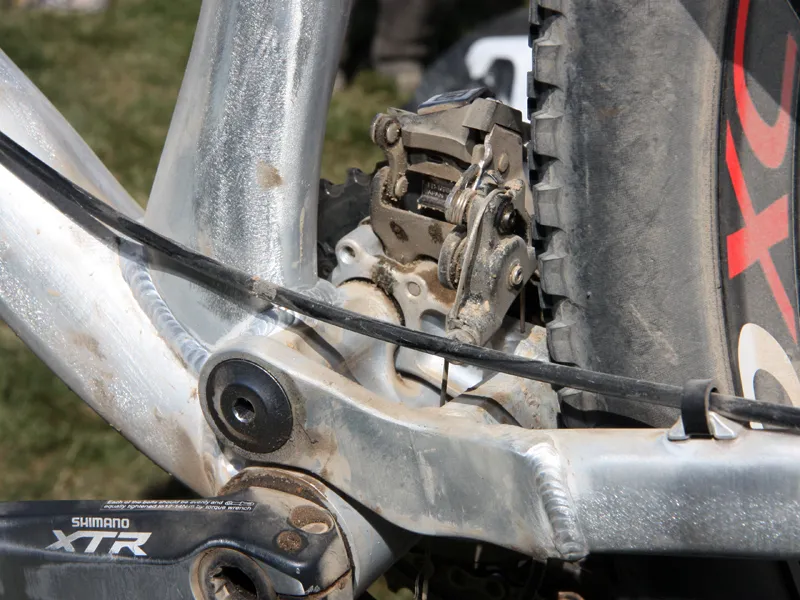
The direct-mount front derailleur gave Rocky Mountain's frame designers more freedom in shaping the seat tube
100mm of rear wheel travel comes courtesy of Rocky Mountain's proven SmoothLink four-bar suspension design, a carbon fiber upper link, conventional cartridge bearings at the main pivot, and the company's slick lightweight angular contact bushings elsewhere – all controlled by a RockShox Monarch rear shock.
Front and rear derailleur cables are routed through the down tube for a cleaner look and better protection from contamination but factory team rider Andreas Hestler tells us the layout will be further refined by the time we see production versions later this year. Though the prototype was shown in raw brushed aluminum, Hestler says each of the three complete bikes to be offered will be covered in glossy paint.
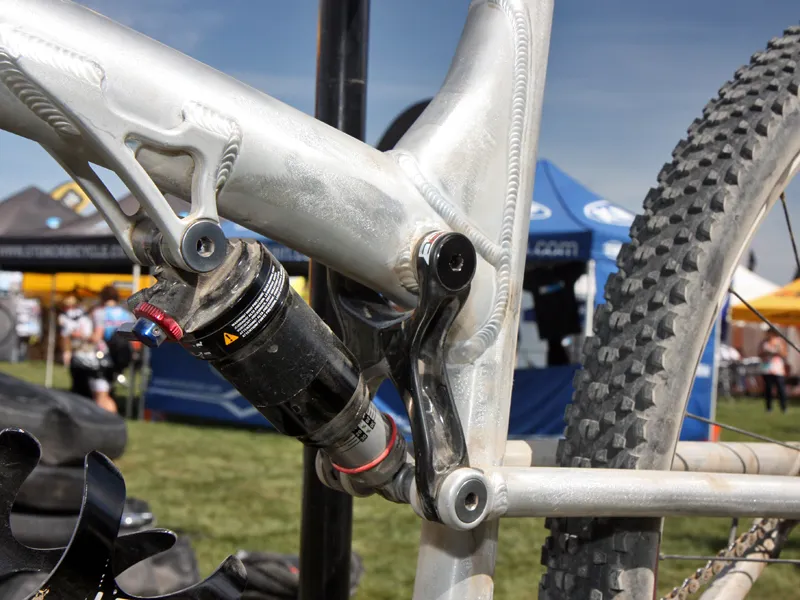
Rocky Mountain still refer to this bike as a prototype but the hydroformed tubing and carbon fiber upper link suggest it's closer to a pre-production machine since all of the major tooling is clearly already completed
